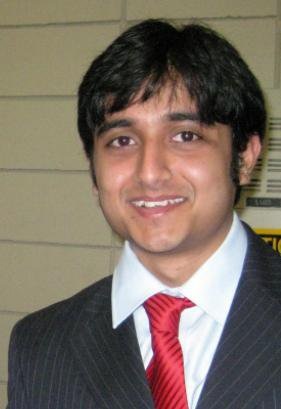Latest News & Events
-

Newly Joined Research Scholars To Our Lab.
Prasanna Kumar Billa, Ph.D research scholar joined our lab in August 2019. Welcome !!
Mukund and Vikas, Dual Degree students joined our lab in August 2019. Welcome !!
-

Newly Joined Research Scholars To Our Lab.
Phanendra, Ph.D research scholar joined our lab in Jan 2019. Welcome !!
Sharad Kumar Yadav, Ph.D research scholar joined our lab in Jan 2019. Welcome !!
D. Manikandan, Ph.D research scholar joined our lab in Jan 2018. Welcome !!
-

MechSE alumnus receives India’s prestigious Bharat Gaurav Award
Dr. Vishal Nandigana has been awarded the Bharat Guarav Award for his academic excellence throughout his undergraduate and graduate studies. The award is being presented to him by the India International Friendship Society (IIFS) later this spring.
-

Power Generator using salt water.
Gaze at the end of a river, where saltwater and freshwater meet. It may not look like anything, but new research suggests this could be a massive source of electricity.
-

Electricity through Sea Water a reality.
Proponents of clean energy will soon have a new source to add to their existing array of solar, wind, and hydropower: osmotic power.
-

MoS2 nanopores make tiny generators.
Researchers at EPFL in Switzerland and the University of Illinois at Urbana-Champaign in the US have used single-layer molybdenum disulphide (MoS2) nanopores as osmotic nanopower generators.
-

Concentration polarization in nanopores.
Concentration polarization means inducing salinity or concentration gradients at the interface of ion-selective membranes like ion-selective nanopores. The nanopores are ion-selective as the nanopores carry negative charges on its wall due to the breaking of carboxylic groups during etching process. Now the negative wall surface charge density allows only positive cations to enter into the pore due to electrostatic attraction. The anionsare repelled from entering into the nanopore due to electrostatic repulsion. The repulsion of anions and the attraction of cations results in formation of concentration gradients at the interface of nanopores causing concentration polarization.
-

AC Electroosmotic Nanofluidic Pump.
We demonstrate for the first time an alternating current nanofluidic pump using asymmetric concentration polarization. By asymmetric concentration polarization we mean inducing asymmetric concentration gradients at the interface of nanopores using alternating electric field. We develop nanofluidic pump using a commercially available poly carbonate track etched nanopore connected to fluidic reserviors of different diameters. The smaller reservior diameter is called as micropore and the bigger reservior diameter is called as macropore. The asymmetric in the reservior diameter causes a net electroosmotic flow inside nanopores.
-

The creativity and enterprise of a 15-member team of students has taken shape as a smart, compact, four-wheeler, which has been displayed on the Anna University campus, during ‘Kurukshetra 2008’.
